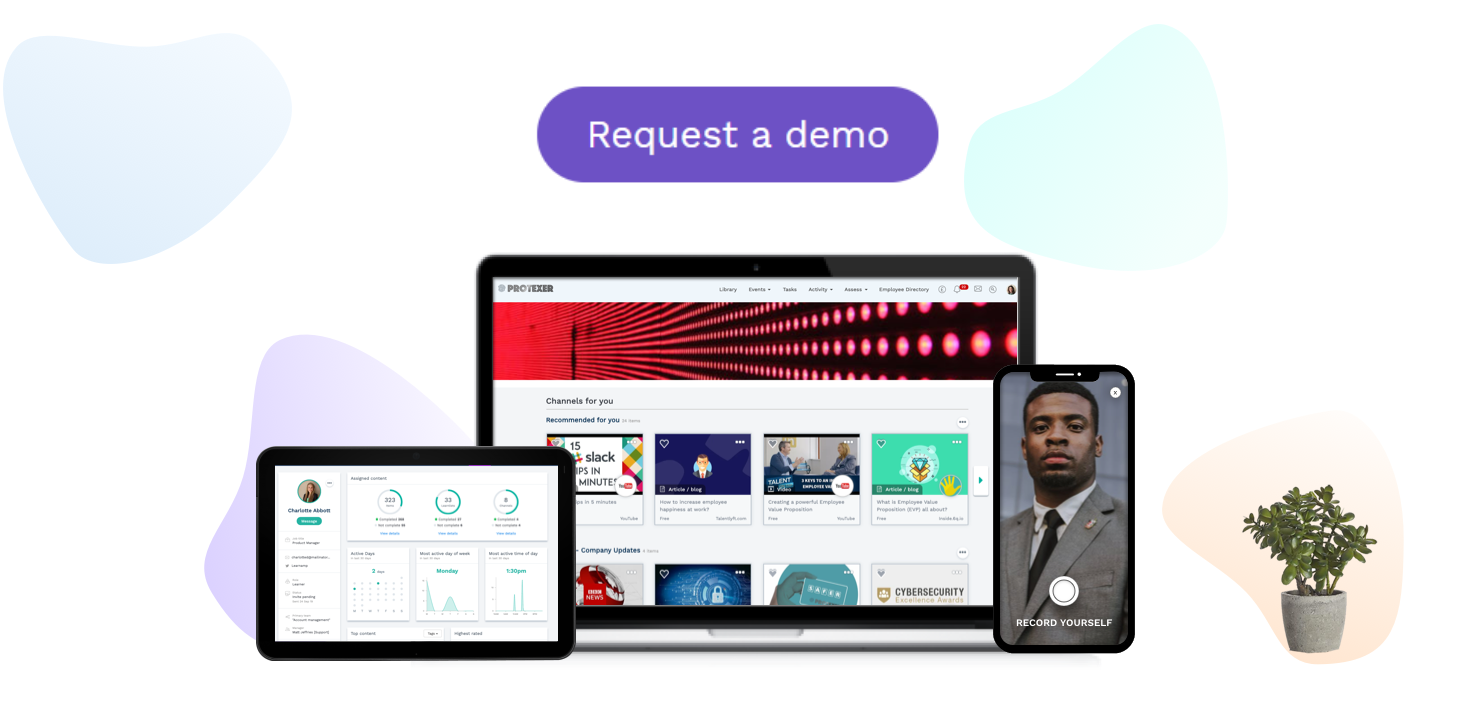When you transition your company to long-term hybrid remote work, getting the onboarding process right is key to success. Here’s why.
More and more companies are embracing the shift to hybrid work . From Spotify to Twitter, progressive businesses have taken advantage of the upheaval caused by pandemic lockdowns to leapfrog to a future-proofed hybrid model.
However, hybrid companies (where some employees work remotely and others remain in the office) can run into challenges without the right People processes in place.
In particular, having some employees at home and others in the workplace can create a two-tier, fragmented culture, in which remote workers feel cut off, uninformed or passed over for promotion.
Luckily, a strong onboarding program can help employees feel like part of a unified team , increase productivity, improve motivation, reduce turnover and save costs.
Here are 3 key ways that onboarding can help build a more successful hybrid company:
1. Onboarding can help new hires feel engaged, by measuring and recognising performance from Day 1A strong onboarding program can drive productivity by ensuring that every new hire has the information and tools to hit the ground running. In fact, a well-designed onboarding process can help bring new recruits up to full productivity four months faster[1].
To learn more about the core components of a strong onboarding program, check out our new best practice guide, Onboarding and induction: How to win employee loyalty from Day 1 .”
To reinforce this increase in productivity, you can also start to track and measure new hire performance from the first day of work Every new hire should know what good performance looks like, how they contribute to the company OKRs or North Star Metric, and how this will be measured.
Not only will this increase alignment and engagement; it will also reinforce a sense of belonging to the company for both in-house and remote workers. Statistics back this up - onboarding increases employees’ understanding of organisational purpose by 37%, engagement by 50% and sense of belonging by as much as 70%[2].
2. Onboarding should reinforce your company culture and values.Another great benefit of a solid onboarding program is to engage new hires with your company’s mission, values and way of working.
Obviously, this is important for every business, but for hybrid companies the feeling of connection to the same shared vision is crucial, especially for remote hires.
To support this sense of engagement with company values, try:
- Educating new hires on the competency framework and supporting behaviours that you’ve identified for your business. An easy-to-use platform like Learn Amp will allow you to bring new recruits into the learning process from Day 1.
- Share your culture deck or record and share workshops on your company culture and way of working.
- Invite new hires to complete a written exercise or record and share a short video, outlining how their own values match the company values and mission.
You could also reinforce the sense of inclusion for remote hires by providing online welcome resources, such as an introduction video to the company by the CEO, or a “Meet the team” video, to give the onboarding process a more human feel.
3. Onboarding can reduce turnover and deliver substantial cost savingsOne of the perceived risks of switching to a hybrid model is the damage it could potentially do to the company culture. For instance, Google expressed concerns in their annual report that the hybrid model could make it harder to “maintain the company culture.[3]” The Society for Human Resource Management found that two-thirds of the employers they surveyed shared this concern, and worried about the impact on employee morale[4]. Careers writer Tracy Brower laments in Forbes: “How can you live your culture, when you don’t live in your culture?”
The good news is that current evidence points in the opposite direction. The option for greater flexibility offered by the hybrid approach may actually reduce turnover[6], even in fields like IT with notoriously low retention rates .
A solid onboarding program can help support this trend, by making sure that you retain the new hires that you went to great time and effort to recruit. While 30% of new joiners leave within the first 3 months, an impressive 70% of employees who received a “great” onboarding will stay for over 3 years.
To wrap up, while the transition to hybrid work can be challenging for employers and employees alike, onboarding can dramatically improve the experience by:
- Building the engagement and alignment of new hires;
- Increasing a sense of belonging and purpose for both remote and in-house employees;
- Improving retention rates in new joiners, thus reducing costs and boosting the stability of the team.
If you’d like to know how to build an onboarding program that will win employee loyalty from Day 1, take a look at our best practice guide on onboarding and induction .
Resources:
[1] https://www.urbanbound.com/blog/onboarding-infographic-statistics
[2] https://www.octanner.com/insights/articles/2018/9/14/_2018_global_culture.html
[6] https://www.itproportal.com/features/how-hybrid-offices-are-solving-techs-talent-retention-problem/





